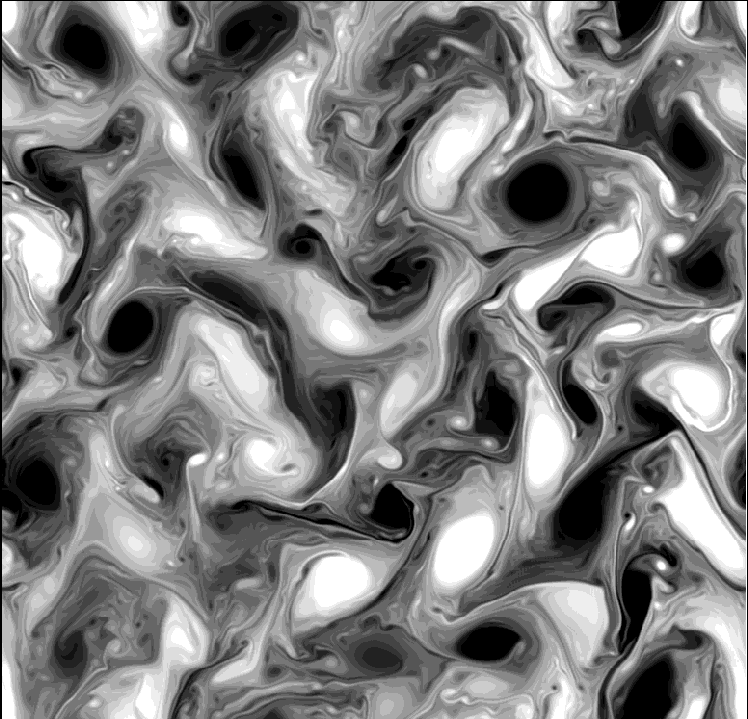Surface quasi-geostrophic turbulence

A snapshot of surface quasi-geostrophic (SQG) turbulence, a special case of geostrophic turbulence in which the potential vorticity is assumed to be uniform above the surface, so that the flow is entirely induced by the surface buoyancy (or temperature field). The figure is taken from a paper by Held, Pierrehumbert, Garner, and Swanson.
Google — “Held” “Surface quasi geostrophic” — for related papers.
Mathematically, a tracer is advected by a 2-dimensional non-divergent flow, the tracer providing the Neumann boundary condition at z = 0 for a 3- dimensional Laplace equation in the domain z >0, the streamfunction for the flow being the solution to this Laplace equation. In standard 2d flow, the advected quantity in the spectral domain is the streamfunction multiplied by the square of the amplitude of the horizontal wavenumber. In SQG flow, the advected tracer in the spectral domain is the streamfunction multiplied by the amplitude of the wavenumber to the first power.
This abstract turbulent flow is being used in attempts to understand the spectrum of motions in the atmosphere and in the ocean and is also of interest mathematically because of analogies with fully developed 3D turbulence — for example,standard scaling arguments imply that the shape of the energy spectrum in the forward cascade shares the same -5/3 spectrum as does 3d turbulence. As seen in the figure, the flow has a fractal character, which suggests that it might be capable of generating singularities in finite time.


